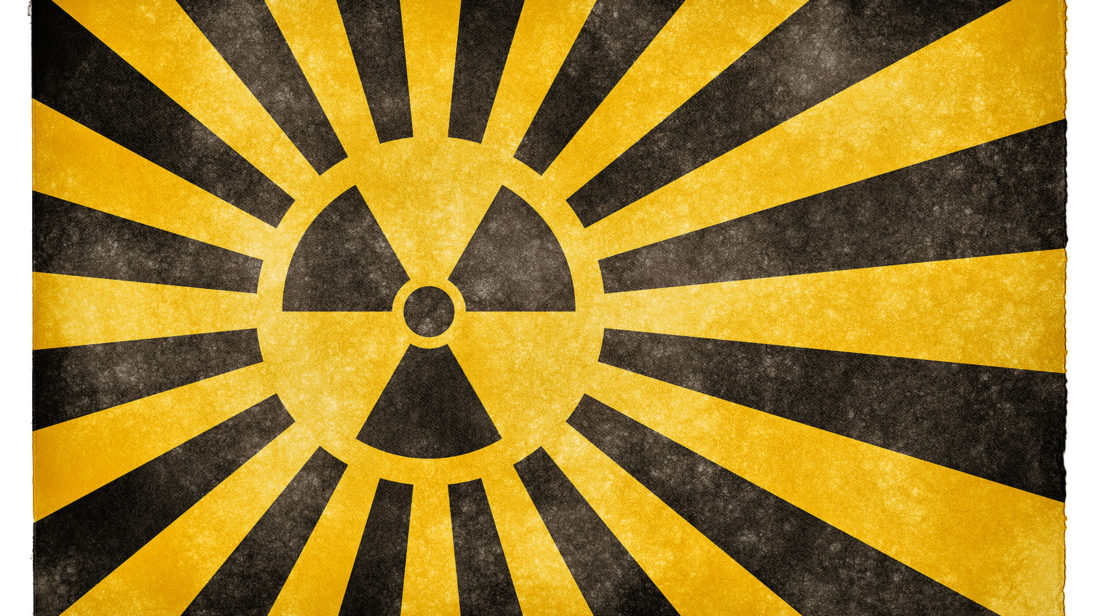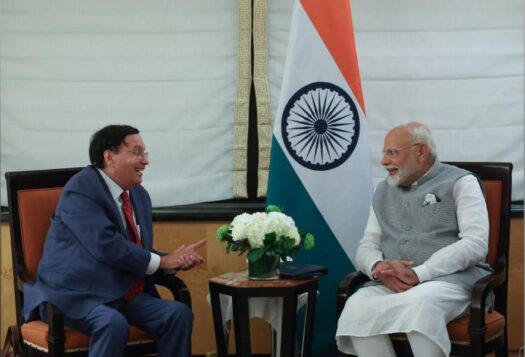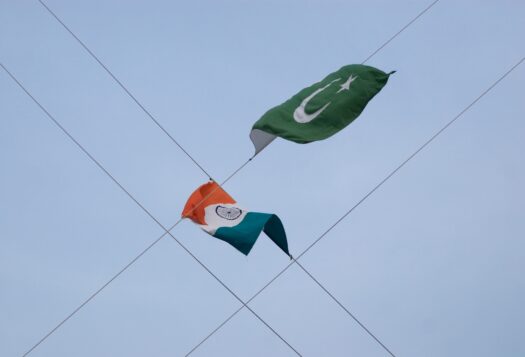
In the current global strategic environment, nuclear neighbors India and Pakistan consider nuclear deterrence to be a peace guarantor in South Asia, largely due to the threat of retaliation or mutually assured destruction. To this end, they have augmented their respective nuclear capabilities with highly sophisticated and advanced nuclear weapons. However, intensifying their nuclear arms race to maintain deterrence equilibrium, coupled with frequent tussles along the Line of Control (LoC) – including an endless harsh exchange of words between military officials, the proximity of large numbers of Indian and Pakistan forces on their shared border, and constant lethal exchange of gunfire – ultimately destabilizes South Asian security. With the constant threat of nuclear escalation during any Indo-Pak conflict, a future nuclear crisis is possible. As Professor David Barash writes, “The only way to make sure nuclear weapons are not used is to ensure there are no such weapons.” Developing larger nuclear arsenals will not avoid nuclear war in South Asia; only complete nuclear disarmament can ensure that nuclear war does not occur.
Nuclear Deterrence in South Asia
While Washington and Moscow were fortunate enough to avoid a nuclear war despite being at the brink of starting one at numerous points—during the Cuban Missile Crisis of 1962, for example—this does not give any assurance that South Asia will follow the same pattern. In terms of political, technical, and situational conditions, the South Asian security milieu is quite different from that of the Cold War. For instance, politically, Islamabad and New Delhi have not engaged in open dialogue since the 2008 Mumbai terror attacks and a lack of communication increases the risk of miscalculation in a crisis. Even geographically, both countries share a border, which further exacerbates the risk of cross-border terrorism and other provocations that could spur a nuclear crisis.
To complicate matters, nuclear deterrence has turned into an arms race between Pakistan and India, with each continuing to flex their nuclear muscle. Last November, India flight-tested Brahmos, the world’s fastest supersonic cruise missile. In January of this year, Pakistan tested its cruise missile with anti-ship and land-attack capabilities, Harbah. A few days later, New Delhi test-fired the Agni-V intercontinental ballistic missile. It also tested the Agni-II medium-range ballistic missile, Prithvi-II short-range ballistic missile, and the nuclear-capable Dhanush ship-launched ballistic missile in February. Then in March, Islamabad test-fired a long range anti-ship cruise missile. These developments reflect the concerning broader trend that India and Pakistan are furiously developing nuclear weapons platforms and even expanding their nuclear arsenals. At a time when both Pakistan and India have given indications that they may utilize the nuclear option, the geometry of deterrence stability becomes increasingly complicated.
Why Deterrence May Fail
Deterrence optimists believe that nuclear deterrence is the cause of stability in South Asia, but how does the existence and possession of nuclear weapons prevent their use? Are nuclear-capable missiles being manufactured and modernized merely to deter adversaries while keeping weapons on proverbial shelves, for show and not for use? India and Pakistan have both expressed an intent to use nuclear weapons if the security situation calls for it. This indicates an assumption on the usability of these weapons, further reiterated in either side’s nuclear doctrine: some analysts have noted that India’s nuclear doctrine has shifted from countervalue to counterforce targeting while Pakistan’s doctrine posits a first-use policy.
In a critical situation, rationality does not guarantee leaders will not use nuclear weapons, and the same applies to South Asia. Furthermore, relying on the assumption that nuclear deterrence will prevent nuclear war in all scenarios is not rational, as nuclear deterrence itself can provide grounds for two belligerent nuclear weapon states to escalate during a crisis situation. For India and Pakistan, the confidence of nuclear superiority and dominance has caused them to test their deterrence credibility, most often by mobilizing forces along the LoC or the international border.
Recent violations along the ceasefire line signify this aggressive stance, with the situation escalating to a point where any miscalculation may cause catastrophic destruction. In the past, the Kargil conflict of 1999 exemplified this, where proponents of nuclear deterrence believe that the existence of nuclear capabilities on either side played a significant role in averting all out war between India and Pakistan. However, nuclear weapons cannot be singled out as the only deterrent factor, when a number of other factors, such as crisis management by international actors like the United States and China, helped avoid a nuclear catastrophe at that time. Most importantly, the Kargil conflict cannot be considered as representative of what Islamabad and New Delhi’s behavior may be in a future crisis.
Disarmament: The Way Forward
Ultimately, deterrence puts both South Asian nuclear neighbors at a greater risk of war, because weapons do not certify peace while tensions continue to simmer. Further, in the case of a deliberate or inadvertent nuclear catastrophe, regardless of doctrine, no nuclear power will have the ability to stop or control the outcome. Additionally, its ramifications will extend farther than the intended target, posing a threat to regional security. Therefore, in such a strenuous security climate as in South Asia, the only solution seems to be completely abolishing, rather than increasing production and modernization of, nuclear weapons.
To some, disarmament is an ostensibly idealistic and unrealistic approach. However, in this situation, it is the only effective way to ensure the non-use of nuclear weapons. Focusing on arms reduction, it is pertinent to resolve the issues between Islamabad and New Delhi through dialogue. As a way to facilitate the process towards disarmament, it is critical that both New Delhi and Islamabad sign the Comprehensive Test-Ban Treaty (CTBT) and the Fissile Material Cut-off Treaty (FMCT) as their first and foremost priority. Besides this, a non-discriminatory nuclear restraint regime is essential to establish in order to keep further nuclear tests and production of armaments in South Asia in check. Furthermore, nuclear confidence building measures and arms control agreements should be encouraged between Pakistan and India, who already exchange lists of their active nuclear facilities annually. Nuclear weapons pose a threat not only to South Asian security but globally. Without disarmament, prolonged stability will only be an illusion.
***
Image: Nicolas Raymond via Flickr


